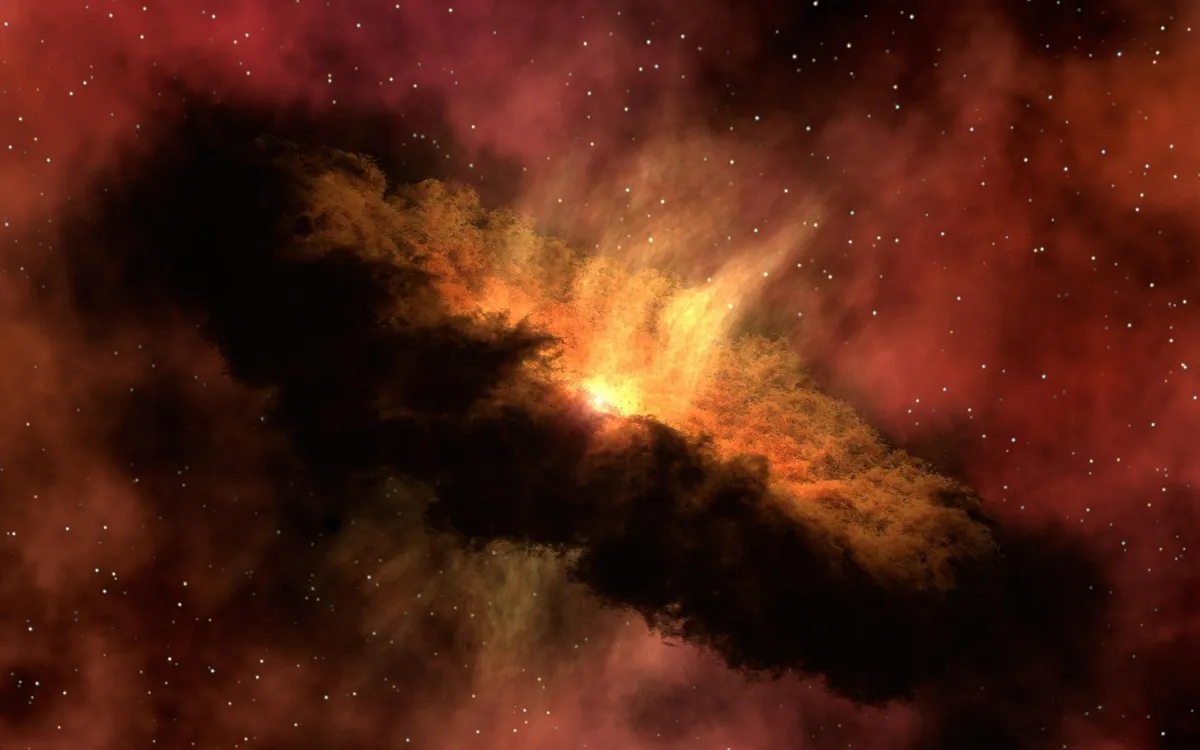
Before there was light, there was cosmic inflation. This phenomenon predates life, the formation of planet Earth, and even the first galaxies. It occurred before the explosive event that scientists typically refer to as the Big Bang. In a state of exotic expansion, the universe grew at an astonishing rate. During a minuscule fraction of a second—approximately a trillionth of a trillionth of a billionth—a space segment no larger than an atom expanded to a size surpassing that of our entire solar system.
This rapid expansion transformed our visible universe, stretching it from an incomprehensibly small point to a size comparable to that of a human head or a city block. Despite the overwhelming evidence suggesting that this unusual precursor to the universe, known as inflation, occurred, scientists are still grappling with the fundamental question: Why did it happen?
To explore these mysteries, NASA's Jet Propulsion Laboratory in La Cañada Flintridge is set to launch a groundbreaking spacecraft called the Spectro-Photometer for the History of the Universe, Epoch of Reionization and Ices Explorer (SPHEREx). This mission is scheduled to launch as early as Tuesday evening on a SpaceX rocket from Vandenberg Space Force Base near Lompoc. The primary goal of SPHEREx is to investigate one of the key clues left behind by inflation.
Over a two-year period, SPHEREx aims to produce four three-dimensional maps of galaxies across the entire sky. These maps will allow scientists to search for subatomic quantum ripples generated by inflation particles approximately 13.8 billion years ago, which are now imprinted on the large-scale structure of the universe. Unlike the James Webb Space Telescope, which focuses on detailed images of specific areas, SPHEREx will provide a broader view of the cosmos, revealing larger structures and patterns.
While the universe has been expanding since its inception, the term inflation is specifically used to describe the rapid, exponential growth that occurred in the early moments of our universe. There are skeptics who argue that the conditions necessary to initiate inflation were incredibly unlikely. Without the direct detection of exotic inflation particles, they contend that the existing indirect evidence remains inadequate. Nevertheless, inflation is widely recognized in the scientific community as the most compelling explanation for various puzzling phenomena observed in the universe today.
The theories surrounding inflation may differ in certain specifics, but the overarching narrative is consistent: whatever existed prior to inflation vanished almost instantaneously as the grand expansion began. During this phase, the universe was devoid of any known matter and was instead filled with an enigmatic energy and particles. As these fluctuated, they created ripples in the energy field, forming regions of both higher and lower energy.
However, the nature of this energy and particle field remains elusive. Scientists are uncertain if it was a single energy field or multiple fields at play. Whatever findings arise from SPHEREx are likely to originate from particles that defy the current understanding of physics.
Once inflation ceased, the energy field and its fluctuations transformed into the exceedingly hot and dense matter that eventually formed the light we see today, as well as the protons, neutrons, and electrons that constitute our universe. This primordial soup, under immense pressure, exploded outward, aligning with the traditional hot Big Bang theory established in the 1920s. The concept of inflation emerged in the 1980s, revising earlier theories to account for unusual effects observed in the universe.
The quantum ripples originating from inflation, which began at the subatomic level, have since grown larger than galaxies. Areas of higher energy evolved into vibrant regions rich with galaxies, while lower energy zones became relatively barren. The network of galaxies we observe today is a snapshot of the dramatic events that transpired in a minuscule section of space 13.8 billion years ago.
The SPHEREx team believes there is still much to uncover regarding this cosmic drama. For the first time, the probe will generate three-dimensional, full-sky maps with sufficient precision to determine whether a single energy field or multiple fields were responsible for inflation. As Spencer Everett, a Caltech research scientist working on the SPHEREx mission, illustrates: "If you throw a tiny pebble into a pond, it creates ripples. Inflation then suddenly swells them into massive waves in an ocean."
By analyzing the resulting ripples, scientists can discern whether single or multiple inflation particles created them. If SPHEREx provides evidence that the distribution of galaxies does not align with a single energy field, it would not only support the occurrence of inflation but also challenge the validity of single-field inflation theories.
Once launched, SPHEREx will enjoy unobstructed views of nearly the entire sky as it orbits Earth. The spacecraft will also focus on infrared wavelengths of light, which are slightly longer than red wavelengths. Since most objects, including Earth, emit heat in the infrared spectrum, measuring anything at ground level proves difficult. To address this, SPHEREx will operate at a frigid minus-350 degrees Fahrenheit, utilizing cone-shaped aluminum shields to maintain its cool.
SPHEREx is classified as a medium-class mission within NASA's Explorers Program, designed to offer frequent flight opportunities for space science missions without the scale of flagship projects like the James Webb Space Telescope—a $10 billion initiative launched in 2021 to tackle various pressing questions in space science. Apart from studying cosmic inflation, SPHEREx will also investigate the formation of some of the first galaxies and how icy cosmic dust, which carries essential molecules for life, reaches planets.
In addition to its primary mission, SPHEREx will launch alongside a small-class Explorers mission known as the Polarimeter to Unify the Corona and Heliosphere (PUNCH), which will examine solar wind. The findings from SPHEREx are poised to contribute significantly to our understanding of the universe's early moments and the fundamental forces that shaped it.